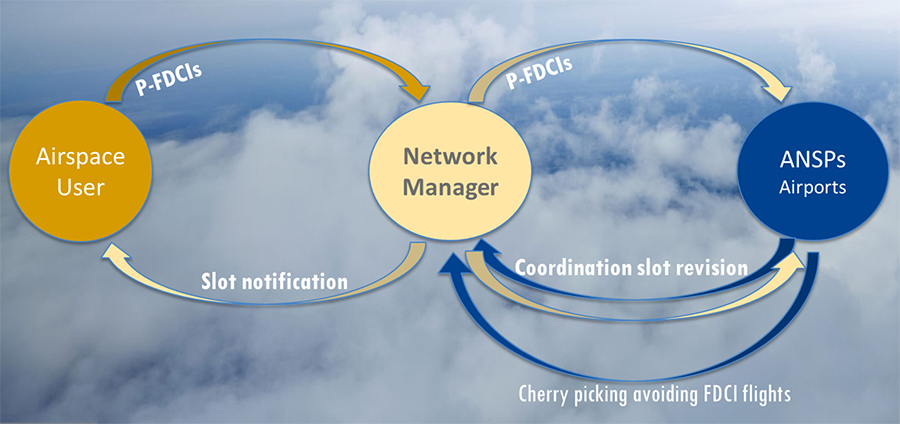SESAR JU partners are developing a more proactive approach to identifying and managing “critical” flights in the Network. The aim is to help airlines minimise costs while improving flight predictability.
A delayed flight can be seen as critical for several reasons: It may miss an important connection; an airport curfew may come with heavy cost penalties; expiry of crew hours; high passenger compensation; or few scheduled alternatives. Researchers in the SESAR 2020 programme are working on a solution (PJ.07-W2-38: enhanced integration of AU trajectory definition and network management processes) that will allow airspace users to flag up critical flights with the Network Manager (NM) using a proactive flight delay criticality indicator (P-FDCI). This SESAR research activity is conducted in close collaboration with the Network Manager following an iterative approach and focusing on quick wins.
This collaborative decision-making process will help airlines to work more closely with the Network Manager and local flow Managers to find solutions to adhere as closely as possible to the original schedule for critical flights. This solution contributes also to the digitalisation and automation of information exchanges to reduce operators workload.
All of which helps to minimise operational costs and increase transparency.
Two types of the FDCI can be activated at any point in the day in view of the evolution of traffic:
- Proactive FDCI or P-FDCI - (currently under development): issued for critical flights before any demand and capacity balancing (DCB) measure is allocated to the flight by the Network Manager. In these cases, airlines can indicate preferences such as making progress in time or a specific flight level so the Network Manager can adapt measures to these preferences, where possible.
- Reactive FDCI (delivered in 2020 as part of SESAR 2020 wave 1 reaching V3 maturity) and deployed by the Network Manager in releases NM24.0 and NM25.0 : issued when a DCB measure is already affecting the flight allowing the Network Manager make any corrective action to reduce the impact when possible
The solution also makes use enhanced ‘What-If’’ function, and enriched DCB information such as hotspots and congestion indicators, to allow airlines to assess the network DCB impact on a flight plan or preliminary flight plan.
Led by EUROCONTROL’s Network Management Innovation Unit, the SESAR solution is developed in strong collaboration with operational experts from airlines,the Network Manager, air navigation service providers and industry (Airbus, Thales, Navblue, Metron, Dassault) with a view to its implementation.
This solution is one of several in the PJ07-W2 Optimised Airspace Users Operations (OAUO) project. The project has received funding from the SESAR Joint Undertaking under the European Union's Horizon 2020 research and innovation programme under grant agreement No 874470

